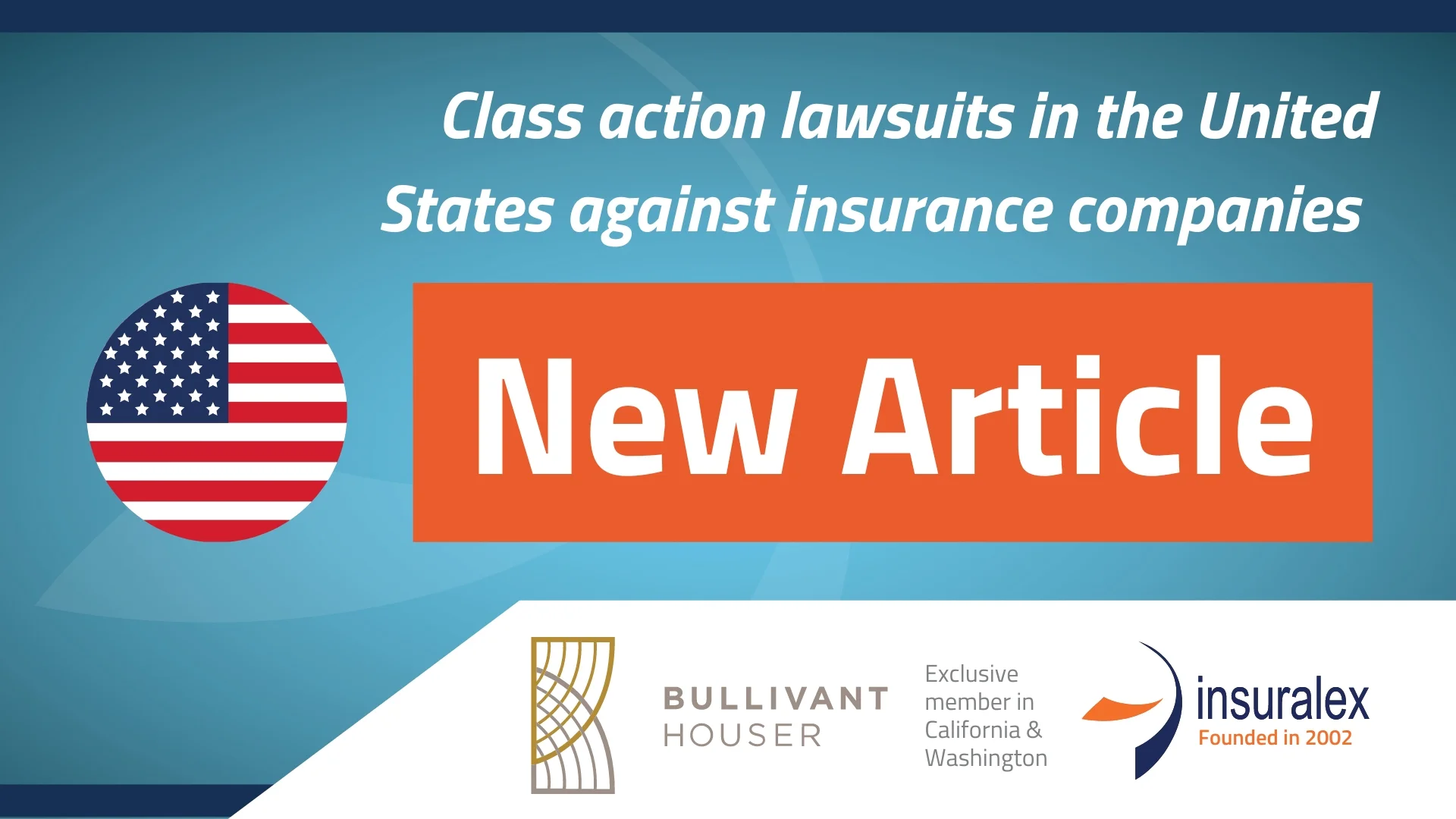
In the United States, it is now somewhat common for an insured-claimant, seeking to be designated as class representative, to initiate a putative class action lawsuit against an insurance company, i.e., seeking monetary damages for alleged underpayment of claims and/or based upon allegations of insurer “bad faith” conduct in evaluating insurance applications, handling insurance claims or in marketing insurance products.
I. Summary of 2022 Class Action Statistics
Carlton Fields has released its 2023 Class Action Survey (“Survey”), which reported on historical trends and included information about significant emerging issues in class action litigation in the United States. Among class action trends identified in the most recent Survey are the following:
- Corporate Defense Spending on Class Actions hit a new record in 2022, with companies spending a record $3.5 billion on class action defense. Spending on Class Actions increased for the eighth straight year, due to two major drivers: (1) class claims are growing larger; and (2) more companies are facing class actions.
- Labor and Employment Litigation accounted for almost 35% of class action defense spending as well as 34% of the class disputes managed by in-house legal departments. COVID-19 related class actions dipped below 10% in 2022 and no longer appear at any measurable level. Among pandemic-related class actions that remained pending, Labor and Employment matters dominated.
- Companies anticipated more data-privacy and consumer-fraud class claims, and for such claims to have a measurable bottom-line impact, pointing to claims based on both the use of social media as well as Environmental, Social and Governance (“ESG”) disclosures and practices, which were viewed as posing increased reputational, brand, and financial risk.
- A major concern of in-house counsel is the perceived growth of “baseless claims.” While they identified potentially effective defenses, top in-house legal decision-makers also viewed courts as becoming more lenient in allowing “baseless” class actions to move forward.
- Class Actions per Company Increased and are Expected to Increase Further. Most companies with class actions, i.e., 92%, have faced them before. Companies facing class actions are seeing the commencement of more class actions over time, which reversed a two-year decline since 2019.
- Class Action Settlements are at the Lowest Level in Five Years. The number of settlements dropped significantly in almost all areas of litigation, including class actions, while settlements of putative class actions on an individual basis rose to almost half of settlements.
- Although in-house lawyers are predicting an incidence of more class actions, companies continue to decrease the number of in-house attorneys dedicated to class actions and to devote fewer hours per attorney to such cases. In-house counsel reported relying more on outside counsel as the preferred approach to controlling the overall costs of class actions.
- Lack of “Actual Injury” has emerged as a highly efficacious Class Action Defense. In addition to the two class action defense strategies reported as most effective, the absence of commonality and the requirement of predominance, commentators now add the defense of lack of “actual injury.” Such defenses typically are asserted at the class certification stage of a proceeding, often after an initial round of dismissal briefing and some limited discovery. Sixty-four percent of in-house counsel reported that early motions for summary judgment, before class certification, also had proven effective.
- Companies are largely split on Mandatory Arbitration Provisions. Most companies reported using mandatory arbitration provisions in at least some of their contracts, but they are divided concerning whether such provisions should preclude all arbitrations. Class arbitration can occur when the contractual arbitration provisions do not specify that the arbitration shall be on an individual basis. In such circumstances, the arbitration clauses may allow for class claims, consolidation, or joinder.
- Some Companies are Using Class Action Waivers in Contracts. About four in every ten companies reported utilizing class action waivers in their contracts. Although such waivers can be a strong risk management tool, 57% of companies omit class action waivers for reasons that include perceived regulatory resistance or other barriers in some jurisdictions.
II. Overview of Federal Rule 23 Class Actions
The class action is “an exception” to the usual rule that litigation is conducted by and on behalf of the individual named parties only.15 In order to justify a departure from that rule, “a class representative must be part of the class and ‘possess the same interest and suffer the same injury’ as the class members.”16 To come within the exception, in United States federal court actions, a party seeking to maintain a class action “must affirmatively demonstrate his compliance” with Federal Rule of Civil Procedure 23 (“Rule 23”).17
For federal court actions, Rule 23(a) provides in part:
(a) Prerequisites. One or more members of a class may sue or be sued as representative parties on behalf of all members only if:
- (1) the class is so numerous that joinder of all members is impracticable;
- (2) there are questions of law or fact common to the class;
- (3) the claims or defenses of the representative parties are typical of the claims or defenses of the class; and
- (4) the representative parties will fairly and adequately protect the interests of the class. 18
Moreover, under Rule 23, in addition to the above requirements of numerosity, commonality, typicality, and adequacy of representation, the court must determine that “questions of law or fact common to class members predominate over any questions affecting only individual members, and that a class action is superior to other available methods for fairly and efficiently adjudicating the controversy.”19 Criteria utilized by courts for assessing the predominance and superiority factors include:
(A) the class members’ interests in individually controlling the prosecution or defense of separate actions;
(B) the extent and nature of any litigation concerning the controversy already begun by or against class members;
(C) the desirability or undesirability of concentrating the litigation of the claims in the particular forum; and
(D) the likely difficulties in managing a class action.20
Rule 23(b) pertains to circumstances where a class action would achieve economies of time, effort, and expense, as well as promoting uniformity of outcome or decision regarding persons “similarly situated,” i.e., “without sacrificing procedural fairness or bringing about other undesirable results.”21 Another objective of this portion of Rule 23 is to facilitate having numerous claimants with small claims, which might not be financially worth litigating in individual actions, combine their resources and bring a single class action to prosecute their collective common claims.22
In order to demonstrate that class action certification is proper, the initiating plaintiff generally must satisfy all four threshold Rule 23(a) requirements and at least one Rule 23(b)(3) requirement.23 As the United States Supreme Court has reiterated:
The Rule “does not set forth a mere pleading standard.” . . . Rather, a party must not only “be prepared to prove that there are in fact sufficiently numerous parties, common questions of law or fact,” typicality of claims or defenses, and adequacy of representation, as required by Rule 23(a). The party must also satisfy through evidentiary proof at least one of the provisions of Rule 23(b)
Download the rest of the article: Class action Lawsuits in the United States against insurance companies




